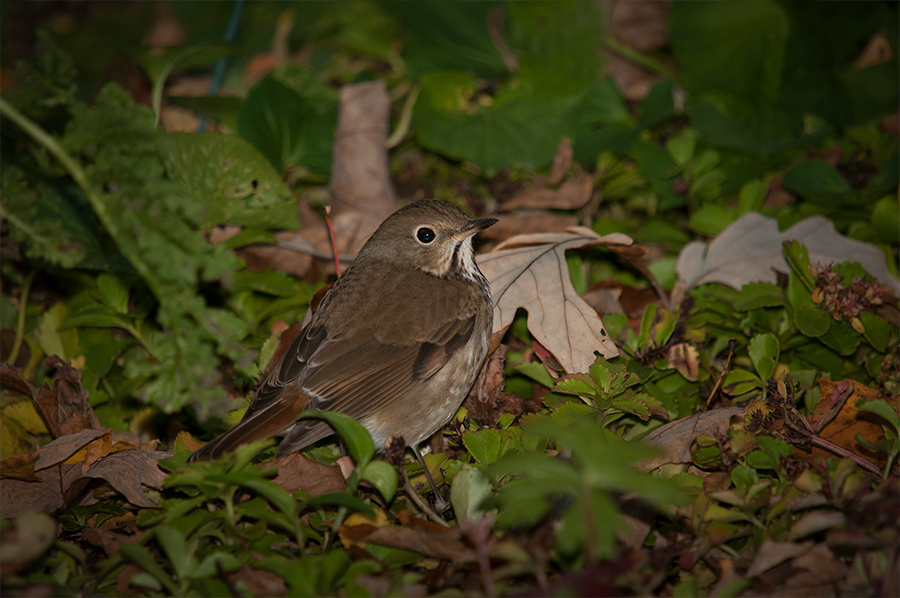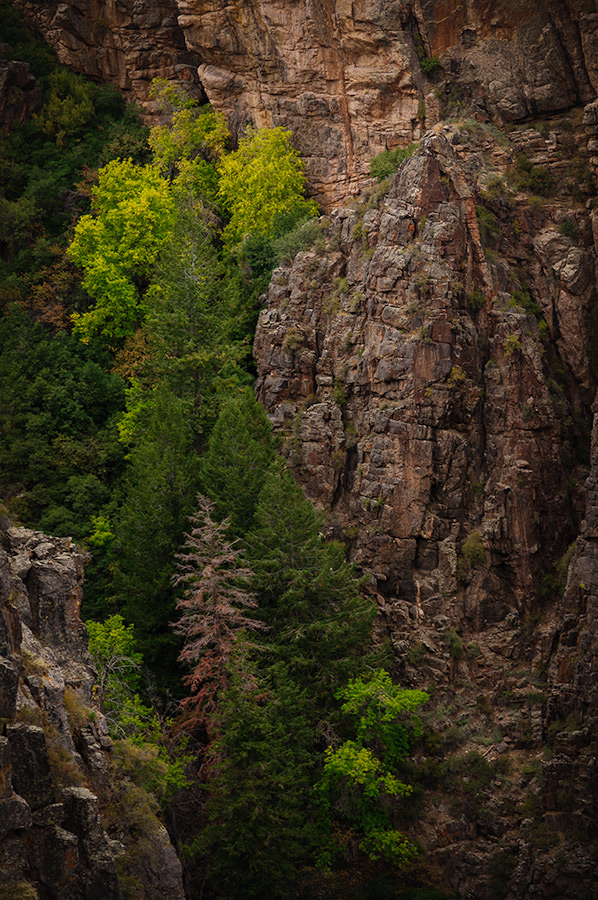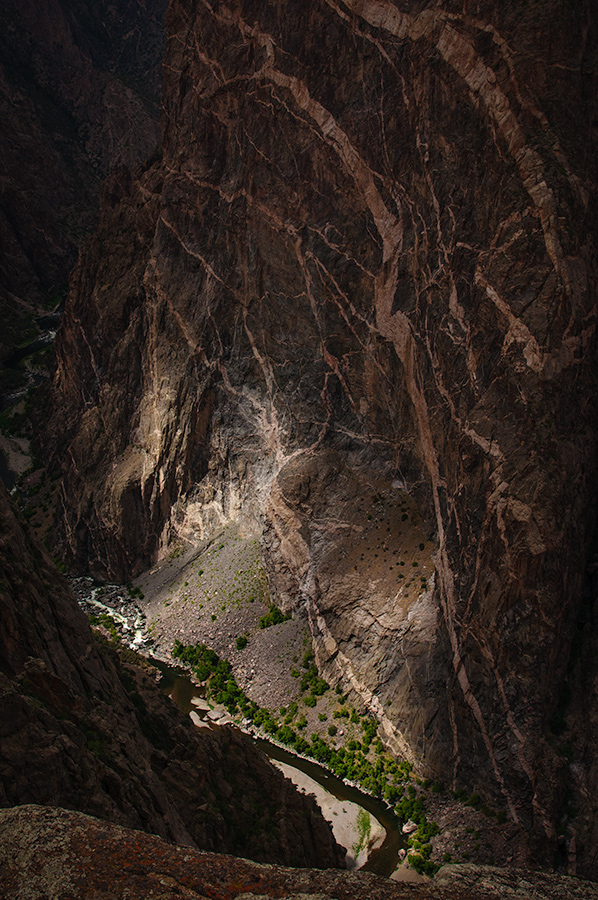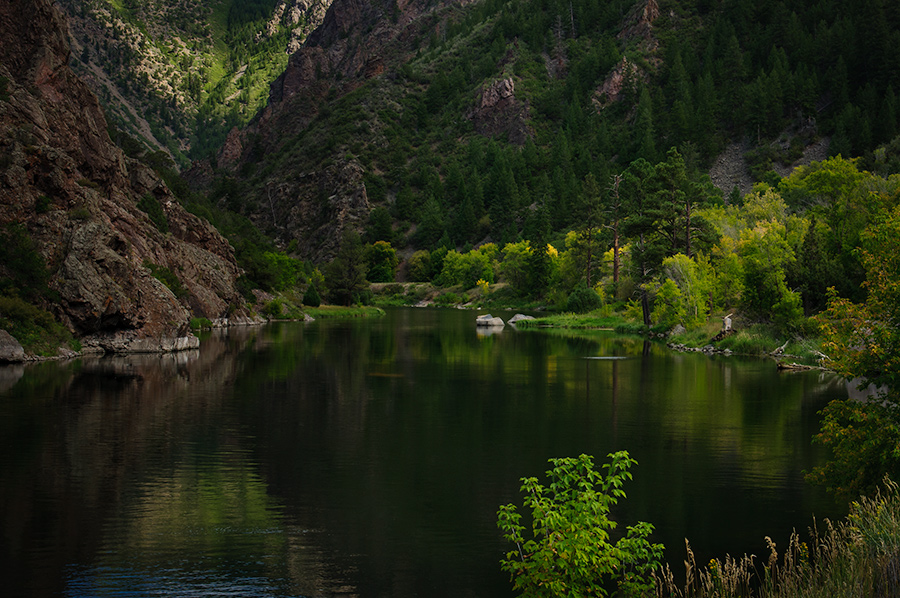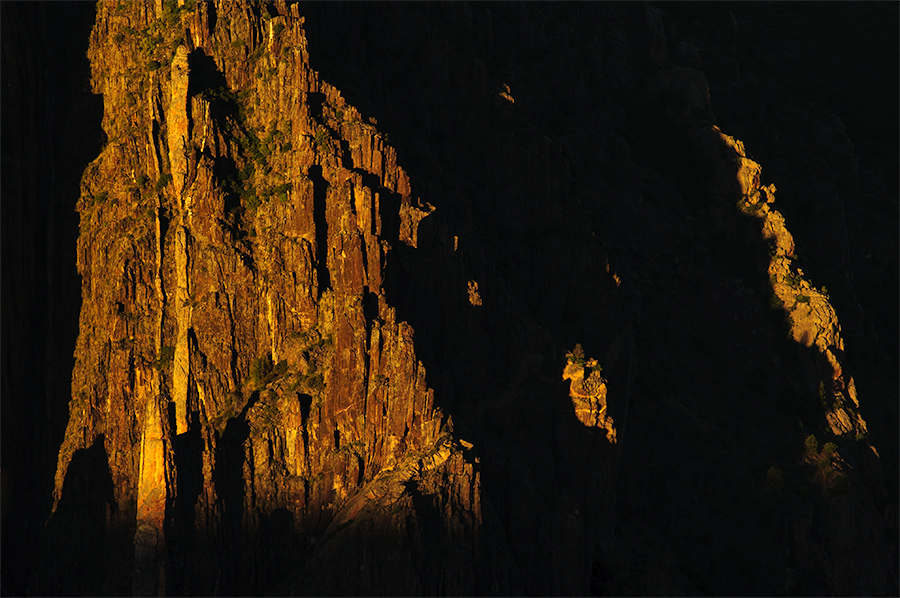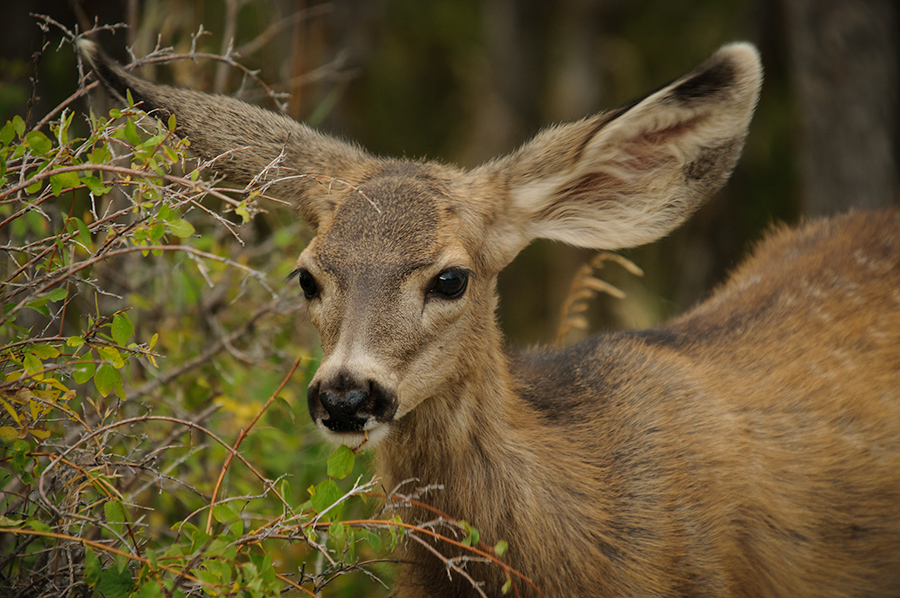
I have been asked by a friend, did you make any wildlife photos during your trip in southern Colorado? The answer is yes, although my focus has been really on landscape photography this time. One animal we have spotted almost at every location where we camped was the Mule Deer. Almost every doe had one or two fauns around and it was fun to watch them interact in a playful way with each other. We were wondering why we saw the small Mule Deer herds quite often very close to or in the campgrounds, even if there was open land around as far they eye would go. The predators they have to fear the most are probably Mountain Lions or Coyotes and these guys mostly stay away from humans, hence the deer feels obviously safer in the presence of humans. That doesn’t mean you can walk right up to them and getting out the long lens is still necessary in order to make the click.
I followed this faun for a while as it was munching the leaves from the shrubs and I had quite a few photos to choose from at the end. Why this one? Well, I like how it holds its ears because there is nothing more that says “Mule Deer” as the gigantic ears they have. I hope you enjoy…

